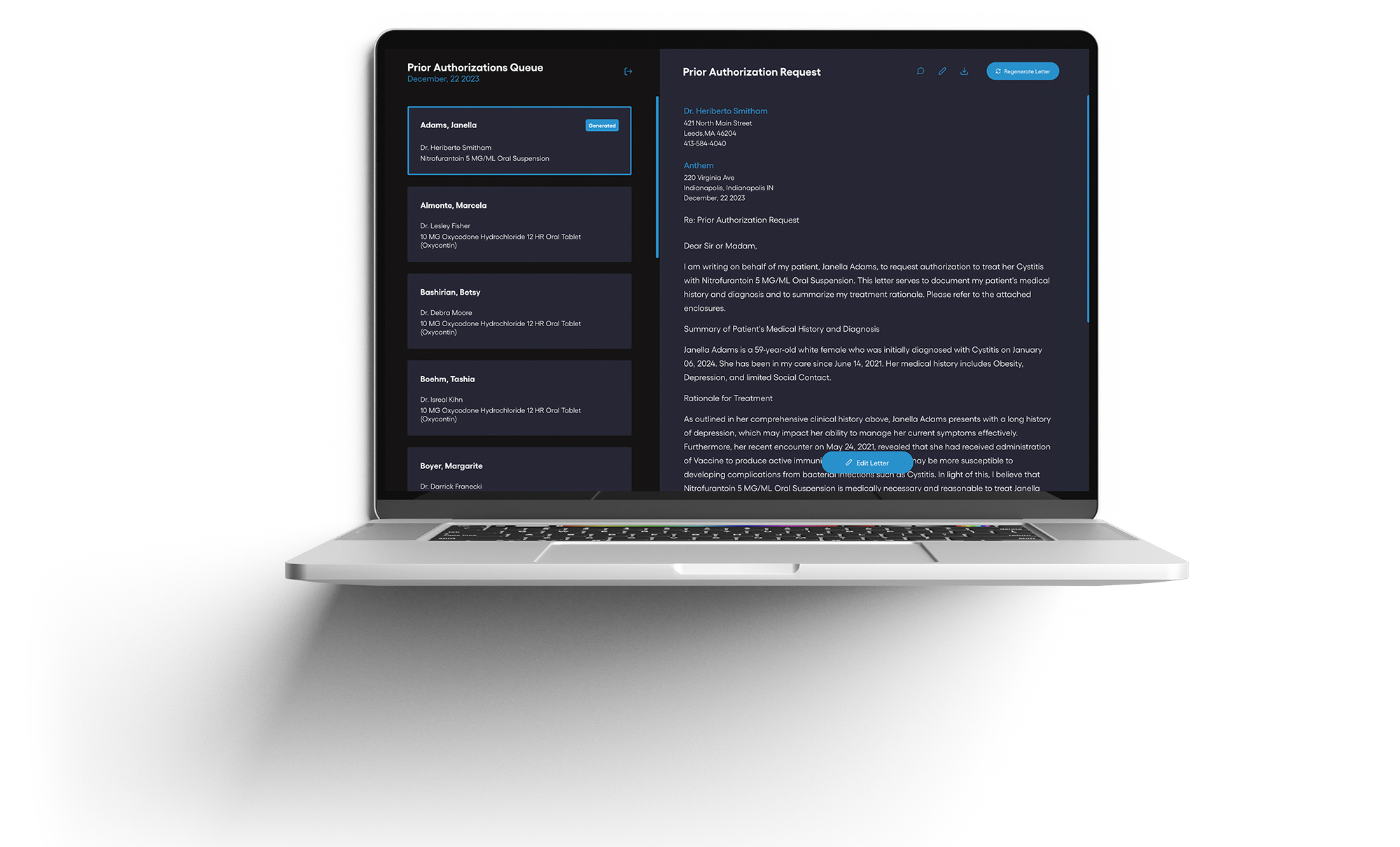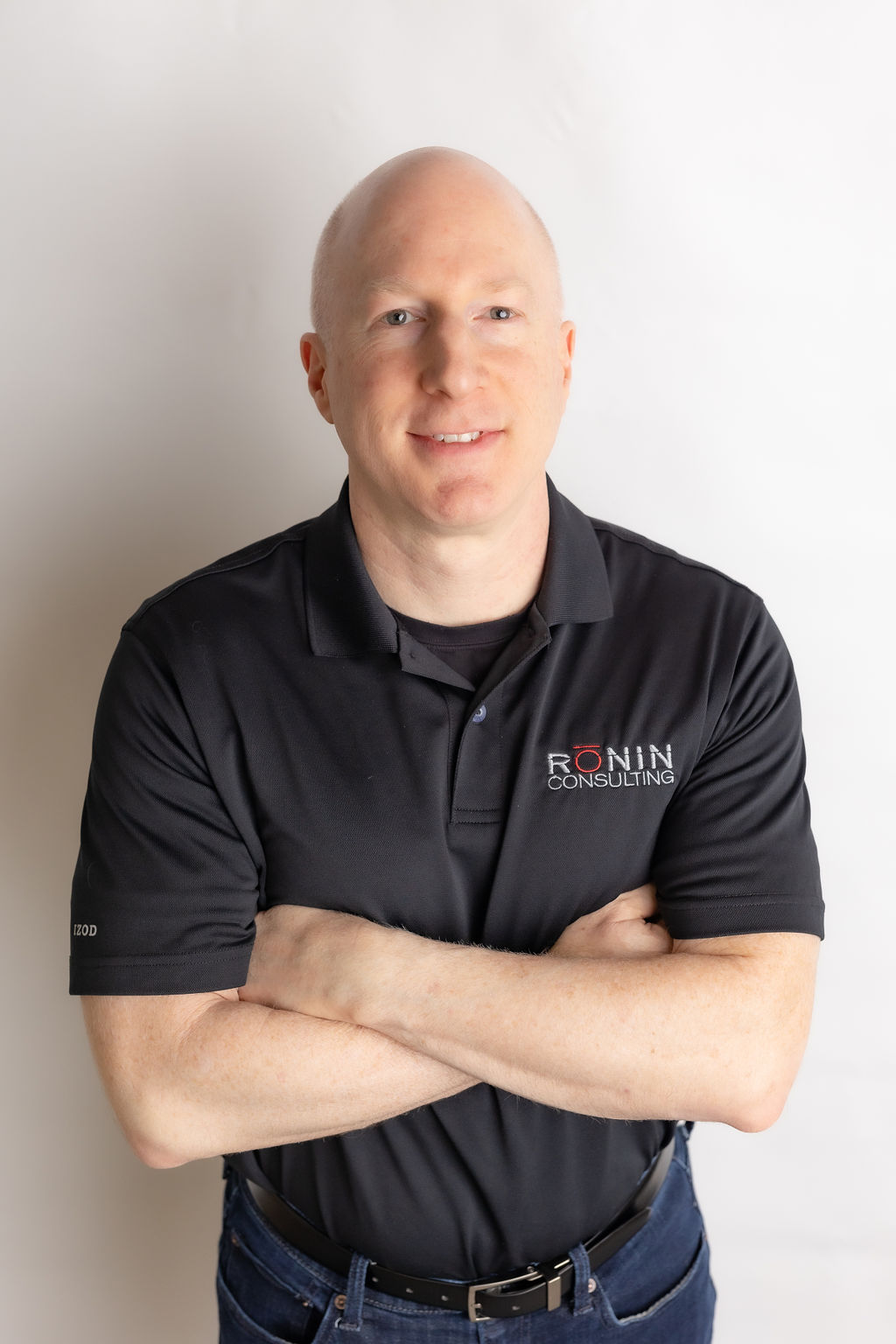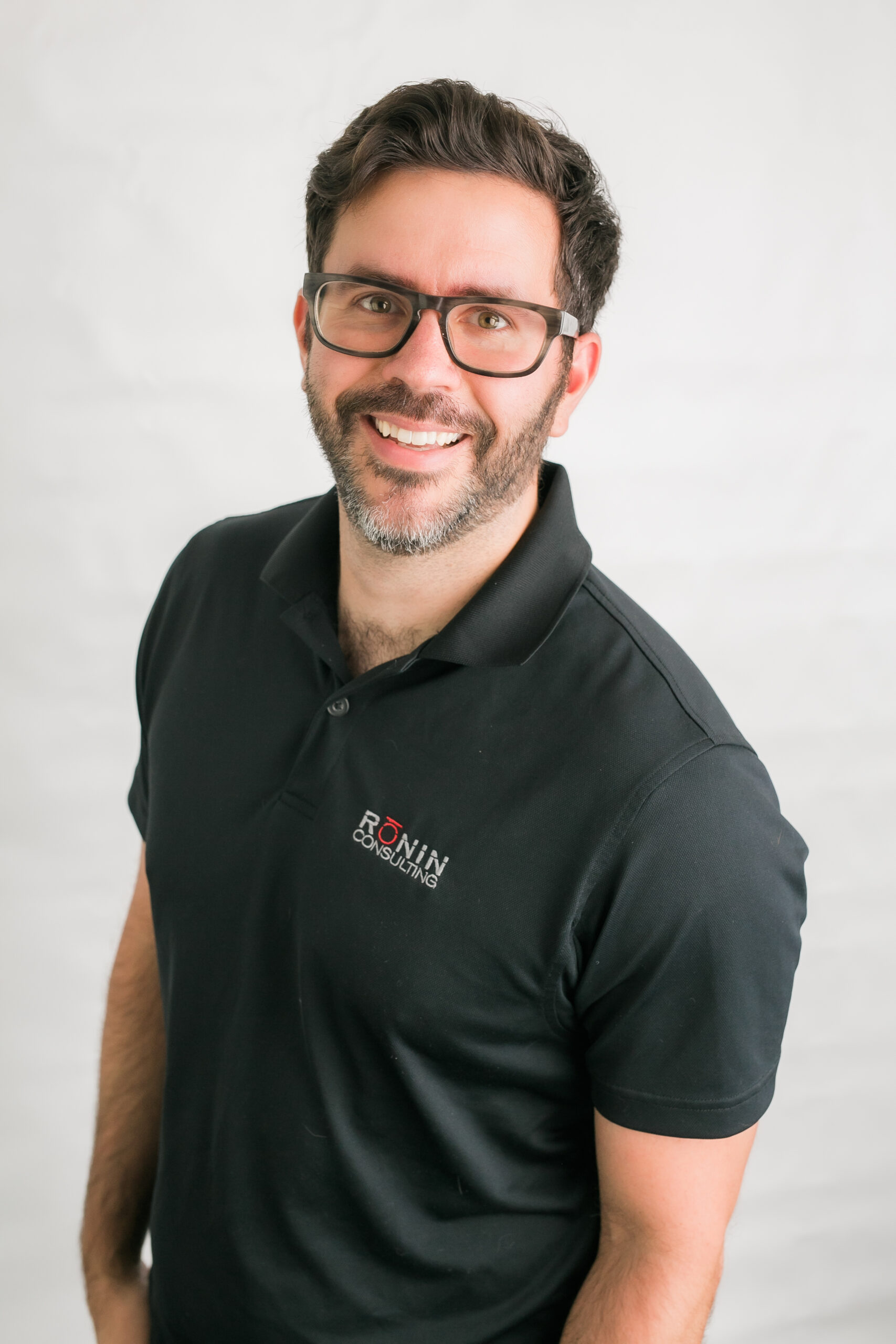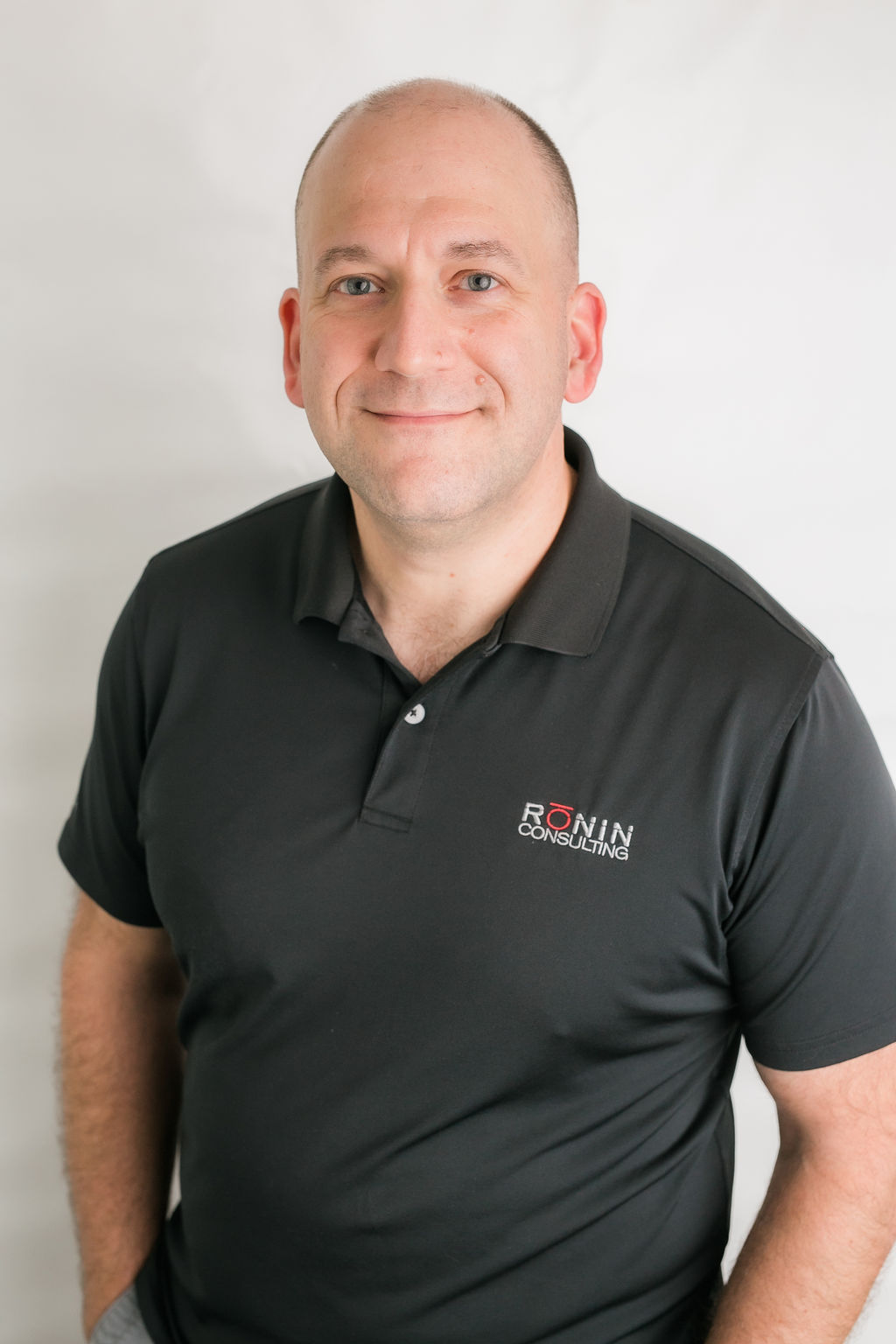2023 TN HIMSS Generative AI Hackathon
This 2023 hackathon aimed for teams to solve real-world healthcare industry problems by leveraging generative AI. Rōnin Consulting won this competition with a custom-made, HIPAA-compliant, open-source, cloud-based, generative AI solution to improve healthcare provider efficiency.

TN HIMSS Hackathon: Generative AI
In the fall of 2023, the Tennessee Chapter of HIMSS hosted a generative AI hackathon. The four-week hackathon emphasized solving challenges that healthcare providers face. The teams involved had to identify a problem and solve it by leveraging generative AI. The areas of focus included:
- Enhancing efficiency and productivity
- Enhancing medical research
- Strengthening patient experiences
- Increasing the quality of care
Teams were placed into either the academic or open group, with our team joining the latter. At the end of four weeks, each team submitted their solutions to be scored by a panel of preliminary judges. These judges evaluated each AI entry based on its impact, innovation, and difficulty and were provided with live access to each team’s software.
Out of 19 participating teams, including healthcare companies and AI vendors, the preliminary judges moved forward with six teams to present their solutions in front of a live audience of peers and a new set of final-round judges comprised of IT executives from healthcare companies.
Our solution, which used an open-source large language model (LLM) and generative AI to streamline the creation of prior authorization (PA) letters, won first place in the open group and overall. This is how and why we did it:
Technologies used
Cloud Environment
- Microsoft Azure
- AWS
Database
- Simulated patient data from SyntheticMass loaded in Azure SQL
Front-End
- React JS running in Azure
Large Language Model
- LLAMA-2-13B (From Hugging Face/Meta)
The challenge
Healthcare professionals have long struggled with cumbersome prior authorization (PA) procedures, leading to significant delays in patient care.
The American Medical Association (AMA) recently published compelling statistics revealing that 94% of physicians face delays, 88% describe the PA burden as unreasonably high, and many physicians and their staff spend an average of 14 hours each week completing PAs.
The healthcare industry needs an innovative solution to streamline and optimize this cumbersome PA process. The current inefficiencies result in delayed patient care and contribute to increased burdens on healthcare professionals.
To solve this problem, we theorized that we could build a solution incorporating an open-source large language model (LLM) trained on clinical data to write individualized, high-quality PA letters to dramatically accelerate the process of PA letter creation. To put this theory to the test, this is how we approached the problem:
The solution
We decided to build a software solution that generates high-quality PA letters in seconds with just a single click. Our approach prioritizes the use of open source components. The goal of using open source was to showcase how healthcare organizations, regardless of their size, can effectively harness the power of AI.
To build our solution, we identified the primary components of the project:
- An open-source AI language model
- A simulated EHR database
- An intuitive user interface
- Secure and HIPAA compliant
An open source-AI language model
We began the project by identifying the model we wanted to use for our generative AI. We started at Hugging Face, a machine learning and data platform that helps users build, deploy, and train machine learning models. Within Hugging Face, we identified LLAMA 2 as the best model for our generative AI project.
LLAMA 2 is a sizeable open-source language model renowned for its versatility and accuracy in generating text-based content. We created an on-premises instance of LLAMA 2. We used our in-house, high-performance AI server to fine-tune it. We employed medical terminology and anonymized transcribed physician and patient conversations to improve inference quality. This fine-tuning allowed us to provide segmented tuning across medical fields. Then we incorporated prompt engineering to aid the model in creating the layout, content, and tone of the letters generated.
A simulated EMR database
We wanted our patient encounter data to closely mimic the real world. To achieve this, we utilized data from SyntheticMass, a source that provides simulated healthcare data that mirrors the demographics and healthcare visits of the state of Massachusetts. This Electronic Medical Records (EMR) data was loaded into an Azure SQL database.
An intuitive user interface
In real-world healthcare settings, most PA letters are still manually written. The process includes sourcing multiple data pages that live within different locations. To streamline this time-consuming process, we wanted to create a simple interface with a login screen, a work queue of prescriptions requiring prior authorization, and an area to edit and approve the generated letters.
Secure and HIPAA compliant
To securely keep patient healthcare data private, healthcare companies must follow strict HIPAA compliance standards. As long-time consultants to many large healthcare organizations, our team knows how to develop software that adheres to HIPAA requirements. For this project, we implemented multi-factor authentication, encrypted all data in transit and at rest, and established secure HTTPS service calls between the Azure and AWS environments.
The results
Our secure, cloud-based application displays medication requests from our simulated EMR that need prior authorization and generates the letters with just one click. Medical staff can preview letters, edit them as needed, and download them as PDF files for submission.
Once the user is authenticated using multi-factor authentication, the database is queried for patient encounters that have medications requiring prior approval. A list of these encounters is presented to the user.
The user then selects an encounter, and the software builds a prompt and delivers it to the LLM. The prompt includes data from the patient’s medical history, the specific medication being requested, and the desired format of the letter.
The LLM generates the letter, which is presented in an editor that enables human review and refinement. Output is saved in PDF format on the user’s computer to send immediately to insurance providers.

Team Rōnin
We couldn't have built a successful project without all these involved Rōnin team members!

Chris Bybee
Vision, Content and Style

Brian Weiss
UI / UX Samurai

Byron McClain
Models, Prompts, and Cloud Wizardry

Chuck Harris
Story and Requirements

Ryan Kettrey
Developer

Guy Edwards
Requirements and Quality Assurance